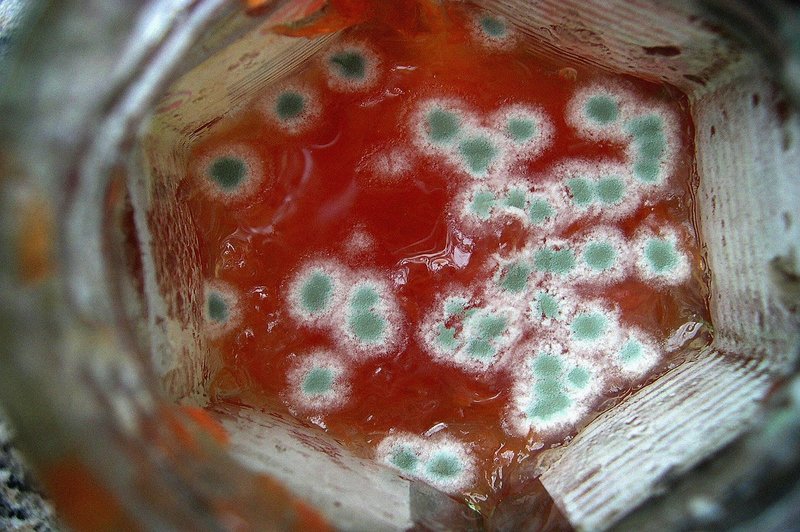Imagine you walked into the kitchen area of your house, and you noticed the dreaded sight of moldy bread. Have you ever wondered what is green mold, its uses, and its effects on our lives? Stop searching any further because this article is going to help you answer your questions.
Green mold is a term that refers to various types of fungi that grow in shades of green. Some common types of mold that might appear green are Cladosporium, Aspergillus, and Penicillium.

It seems to be delicate and fluffy or refined and can have various tints of the color green. You might have seen green molds on organic products, bread, and numerous different food sources.
What are the benefits of green molds?
If you observe keenly, you will realize that molds are everywhere! We can see it in antibiotics and other drugs. Penicillin and other necessary antibiotics were developed from molds, as were some other medications.
You can also see molds in manufacturing industries. Molds are utilized mechanically to create enzymes that are used in the manufacturing of different products. For instance, mold can be used to create the enzyme rennet that curds milk for cheese production.
In addition, one of the most interesting scientific facts about mold is that it is usually found on decayed materials. Molds play a significant role in the breakdown of organic materials and recycle nutrients back through our ecosystem.
According to the Genetic studies at the Vienna University of Technology, fungi can be used as an eco-friendly alternative to conventional fertilizers. They can also shield the plants from diseases, and at the same time, boost their growth.
Harmful Effects Of Molds
Despite the benefits that molds give us, they also outweigh the adverse effects on people. Here are some harmful effects of green molds:
- Health problems – Green molds can cause health problems, especially in susceptible people.
- Respiratory issues – Continuous exposure to mold can affect the respiratory system and trigger asthma attacks and allergens.
- Possible cancer source – Some molds growing on food are believed to cause cancer, particularly of the liver.
- Damage – This kind of fungus can grow anywhere in your home where a water problem has occurred. Here is a useful article on how to replace water damaged wood floor tongues at home.
You will have gathered by now the benefits and the harmful effects of green molds in our lives. If you notice any green mold at home, you will probably remove it right away.
Please know that it is impossible to eliminate the risk of mold developing in your house. However, there are ways of controlling it.
Ways To Control Or Get Rid Of Mold
An ideal way of keeping mold from developing is to:
- Keep restrooms, pantries and kitchens very much ventilated
- Maintain water pipes to prevent possible leakages
- Monitor your attic and basement for flooding
- Consume food before it spoils
If mold still continues to appear, it is ideal to handle them immediately. To help you with that, here is a helpful guide on how to get rid of mold spores in the air. If mold develops on the food, dispose of it as soon as possible and clean the area where the food was with a bleach solution.
Next, you can also minimize mold growth by covering food to keep mold spores from taking hold and keep perishable foods inside the refrigerator (don’t leave any perishables out of the fridge longer than 2 hours). It is also essential to use a clean storage container when putting away the leftovers and keep them in your refrigerator as soon as possible. One must also use scraps within 3 to 4 days.
It is also an absolute necessity to clean the inside of the fridge every few months to limit the risk of mold development and cross-contamination of the food. Use clean dishcloths or sponges — if they smell musty, a new mold is growing on them.
Immediately wash the dishcloth after each use with hot water and detergent and leave it to air dry before reusing. Lastly, carefully handle the moldy foods in order to prevent spreading mold spores around. Check other surrounding foods to ensure that the mold did not spread.
Conclusion
In a normal setting, human beings spend almost 90% of their lives indoors. They are in contact with molds each day of their lives.
There are numerous things unknown about mold, but researchers are determined to gain proficiency in every aspect of it. It is necessary to educate humanity on “what is green mold” since some could save lives, while others could take them away in a snap.
There are no current regulations set on dealing with mold, but some insurance companies provide mold coverage. Overall, proper hygiene, care, and sufficient knowledge are essential to keep away from the harmful effects of green molds. It will not just bring you to places, it will also save your life.
